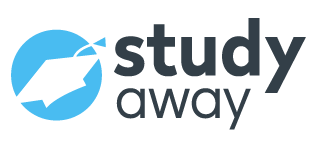
Australia is calling! With its high quality of life, excellent healthcare system, and stunning landscapes, it's no wonder many internationally qualified nurses and midwives (IQNMs) dream of working Down Under. Discover the latest requirements and steps for internationally qualified nurses and midwives to apply for registration in Australia.
Who are Internationally Qualified Nurses and Midwives (IQNMs)?
Australia's aged care sector is growing quickly because of an aging population, which means more demand for qualified workers and many job opportunities. With significant government funding and new programs to improve care quality, this industry provides job security and a chance to make a difference in people's lives.
Why Study Aged Care and Community Service?
Internationally Qualified Nurses and Midwives (IQNMs) are healthcare professionals trained outside Australia. Their qualifications must be recognised and meet licensing requirements to practice in Australia, which may include additional training. There is a process to bring your registration to Australia and become a registered nurse there. However, we must explain the following concepts.
Minimum Standards to be Considered for IQNM
Registration standards outline what applicants must meet to be approved as nurses and midwives. The following points are important:
- Criminal History
- English Language Skills
- Recency of Practice
- Professional Indemnity Insurance Arrangements
For more details on registering and getting endorsements, please visit the NMBA’s website.
Who are the Governing Bodies for Nursing in Australia (ANMAC, AHPRA, and NMBA)
Regulatory Bodies govern the way Australia's health industry operates, here are the acronyms you must know to
Australian Nursing and Midwifery Accreditation Council (ANMAC)
ANMAC is the independent body that checks nursing and midwifery education in Australia, appointed by the Nursing and Midwifery Board of Australia (NMBA). ANMAC also assesses the skills of nurses and midwives who want to move to Australia under the General Skilled Migration program.
Australian Health Practitioner Regulation Agency (AHPRA)
AHPRA partners with 15 national boards, including the Nursing and Midwifery Board of Australia, to protect the public by overseeing the registration of health practitioners in Australia.
Nursing and Midwifery Board of Australia (NMBA)
NMBA is an independent authority responsible for:
- Registering practitioners
- Developing professional standards, codes, and guidelines
- Managing complaints and notifications about practitioners
- Assessing overseas-trained practitioners who want to work in Australia
- Approving accreditation standards and educational courses.
Why Would You Want to Work as a Nurse or Midwife in Australia?
Australia’s healthcare system is strong, and with an aging population, there are many job opportunities because of the following reasons:
- High demand: Australia has a strong need for nurses, increasing job opportunities for graduates.
- Supportive environment: International students are welcomed and supported in their studies to fill the short supply.
- Modern facilities: Access to cutting-edge technology, medical research, and resources enhance the learning experience in Australia.
- Diverse healthcare settings: Gain experience in various healthcare environments, broadening skills and knowledge.
- Globally recognised education: Australian nursing qualifications are highly regarded internationally, opening doors to a global career in the UK, NZ, US, Canada, and South Africa.
The Nursing Sector in Australia
Nurses can work in many settings in Australia and with many other public and private health professionals. Settings where nurses work include:
- public hospitals
- private hospitals
- aged care (both residential and home)
- primary care practice, including general practice clinics
- community health services
- schools
- correctional facilities
- rural and remote communities
- Aboriginal Community Controlled Health Services (NACCHO)
What is the Salary Range for Nurses and Midwives in Australia?
The salary for nurses and midwives in Australia varies depending on experience, location, and the type of role. On average:
- Registered Nurses (RNs): $85,000 – $95,000 per year.
- Midwives: $85,000 – $105,000 per year.
- Nurse Practitioners: $130,000 – $150,000 per year.
Note: Rural and remote areas may offer higher salaries to attract skilled professionals.
What is the Process for Going From IQNM to Registered Nurse in Australia
Key Summary Points of the the extensive process is listed below,
- Self Check for eligibility to become a Registered Nurse in Australia
- IQNM Assessment Process
- An orientation program (Part A) - Video orientation and Quiz
- A Portfolio State
- NCLEX Assessment
- OSCE Assessment
- Orientation Part B
1. Self-Check NMBA’s Qualification Assessment Criteria
NMBA launched a new assessment model, which includes:- Bachelors of Nursing or Equivalent and graduated
- Holds a current and unprohibited Nurse Registration in the Health Ministry of their practising country
- Have practised unprohibited for at least 1 year
- No Criminal History
- There is a self-check tool that provides detailed requirements and information on the different streams the applicant may fit into
2. NMBA’s IQNM Assessment Process Starts
Those who successfully complete the self-check must proceed in the IQNM assessment process. In the IQNM assessment process, candidates must pay a non-refundable assessment fee of $640 AUD. The process includes the following:
- An orientation program (Part A) - Video orientation and Quiz
- A Portfolio State
- NCLEX Assessment
- OSCE Assessment
- Orientation Part B
3. An orientation program (Part A) - Video orientation and Quiz
Orientation Part 1 is an online course that introduces candidates to Australia and the Australian healthcare system, focusing on the roles of nurses and midwives.
- It must be completed within 90 days of account creation and after finishing the Self-check.
- Must complete this part to either apply for registration (Stream A) or move on to the
- Portfolio stage (Stream B and IQNMs needing qualification assessment)
4. Portfolio Stage
At the Portfolio stage, Ahpra verifies the information candidates submitted during the Self-check. Candidates must also provide additional personal details, contact information, identification, and qualification documentation.
- The following documentation must be uploaded to Portfolio:
- Official qualifications relevant to the portfolio
- Qualification/s (e.g., degree)
- Academic transcript
- Evidence of name change (if applicable)
- Proof of identity
- If the qualification needs assessment, IQNMs must also upload the original registration certificate from their regulatory authority and provide translated copies of documents in a non-English language.
- Additionally, if a candidate has passed the NCLEX-RN exam within the last 10 years, they must upload proof of passing.
5. NCLEX Assessment (Multiple Choice Questions)
The RN MCQ Examination is managed by the NCSBN and conducted by Pearson VUE using the NCLEX for RNs.
- Once your portfolio is approved, your IQNM dashboard will update.
- Register and pay the exam fee for the NCLEX-RN with Pearson VUE via the NCSBN website.
- After registration, the IQNM exams team will confirm your eligibility.
- You will receive an authorization to test email from Pearson VUE.
- Once authorized, contact Pearson VUE to book your exam location, date, and time.
6. OSCE Assessment
The OSCE (Objective Structured Clinical Examination) is A practical assessment that tests the clinical skills of healthcare professionals, who rotate through stations to demonstrate tasks and knowledge in patient assessment and procedures. Internationally qualified nurses and midwives (IQNMs) must prove their competency before registering in Australia.
To be eligible for registration in Australia, candidates must pass the OSCE after completing Orientation Part 1, Portfolio, and MCQ exams.
7. Orientation Part B
Orientation Part 2 must be completed within 6 months of NMBA registration. It provides a deeper understanding of Australia’s healthcare system and your role as an IQNM. The moduleThe module includes reading, videos, and interactive content. covers:
- Part 2a: The Australian healthcare system and your role
- Part 2b: Person/woman-centred care
- Part 2c: Culturally safe care
- Part 2d: Your responsibilities in the Australian healthcare system
What are the Challenges IQNMs
Here’s a summary of the challenges internationally qualified nurses and midwives (IQNMs) face when seeking employment in Australia:
-
Language Requirement: Internationally Qualified Nurses and Midwives (IQNMs) must meet language standards like IELTS (7.0 overall, 7.0 in speaking/listening/reading, 6.5 in writing) or OET (B grade). This can be tough, especially with medical vocabulary and Australian accents.
-
NCLEX-RN: Passing the NCLEX-RN can be challenging for IQNMs because it focuses on U.S. clinical practices and uses a computerized adaptive testing format. They must pass within three attempts.
-
OSCE: The OSCE requires IQNMs to show practical skills in simulated situations. This can be challenging due to differences in clinical practices and the Australian healthcare system's focus on patient-centred care and teamwork.
-
Different Healthcare Systems: Adapting to Australia’s healthcare system and legal rules and focusing on cultural safety and person-centred care can be a big adjustment for IQNMs.
These factors make it difficult for IQNMs to transition to nursing or midwifery in Australia. It requires learning new clinical practices and understanding the culture.
Why Studyaway Stands Out from Other Education Agencies
At StudyAway, we offer a unique, tailored pathway for internationally qualified nurses (IQNMs) looking to advance their careers in Australia. Unlike other services, we provide exclusive programs that help you complete your nursing registration in Australia and seamlessly guide you through the visa application process.
Here are the different options we offer that are tailored to your situation:
- Bridging Program (Online) - Train online and submit documents from your home country, then apply for a Tourist Visa (subclass 600) to come to Australia to complete the practical part of you IQNM process (OSCE)
- Graduate Certificate in Advanced Nursing Practice: Study on a Student Visa(subclass 500), complete your course on campus in Australia and use the program to finalise your Nursing Registration in Australia through the NCLEX, OSCE and English Test Preparation.
- Master of Nursing: Pursue a postgraduate degree with us on a Student Visa while preparing to complete your Nursing Registration in Australia, allowing you more time to work on your skills, without rushing through your studies.
All of our programs include PTE Training, giving you the edge you need to pass the PTE Academic exam and meet Australia’s English language requirements for nursing registration
Expert Visa Application Assistance for Nurses
Studyaway Team has a migration agent that will process your visas! Standard options for nurses and midwives include:
- Skilled Independent Visa (subclass 189): For skilled workers without sponsorship
- Temporary Skill Shortage Visa (subclass 482): For workers sponsored by an Australian employer
- Skilled Nominated Visa (subclass 190): For workers nominated by an Australian state.
Final Thoughts: Your Nursing Career in Australia Starts Here!
Becoming a registered nurse in Australia as an internationally qualified nurse (IQNM) can be a rewarding but challenging journey. At Studyaway, we simplify the process with tailored programs that support you through registration and visa applications.
Whether you want to complete a Bridging Program, pursue a Graduate Certificate in Nursing, or a Master’s degree, we provide the tools, training, and expert visa assistance you need to succeed.
Ready to make your dream of working in Australia a reality? Contact StudyAway today and take the first step toward your new career!



